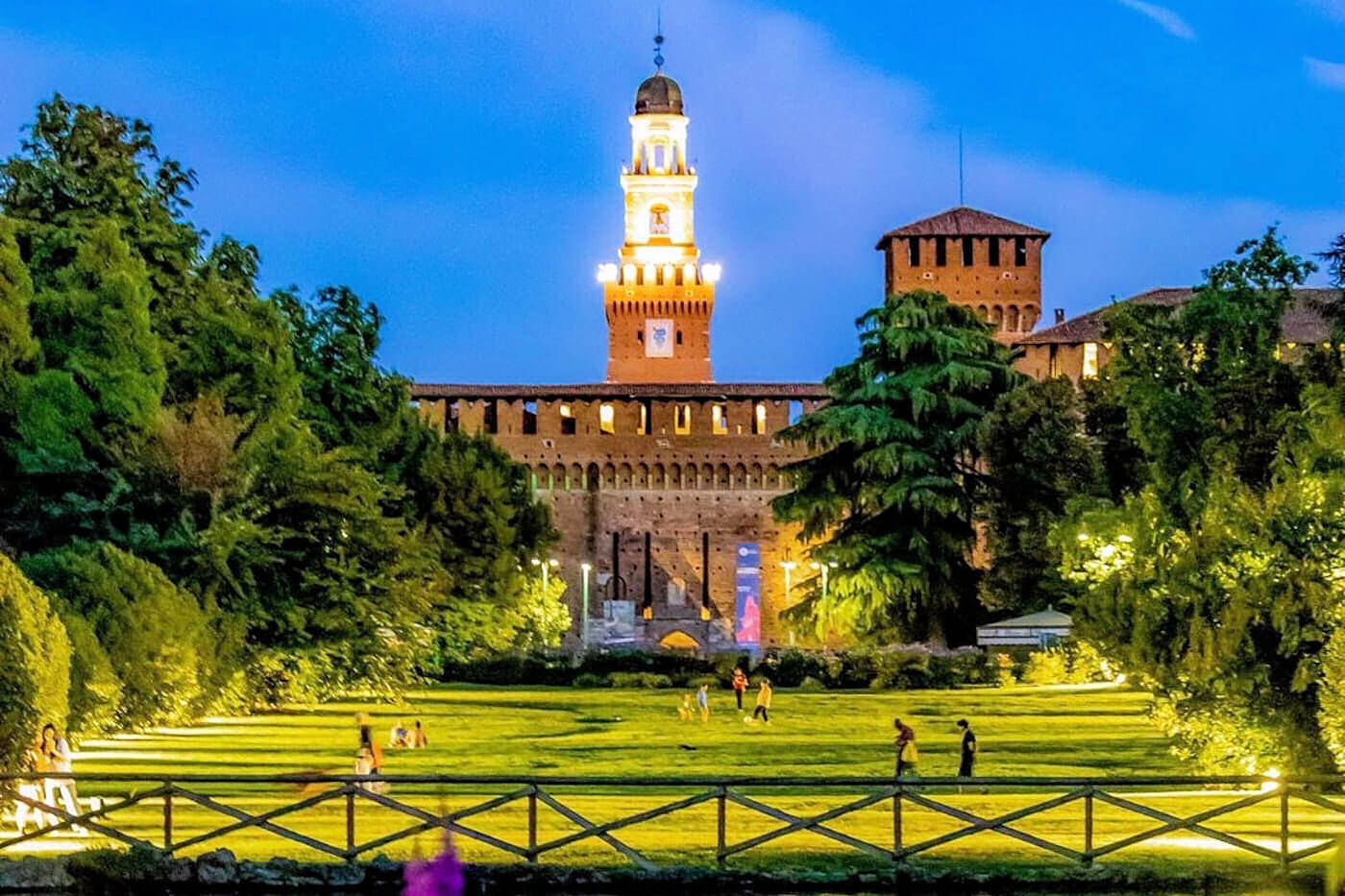ITINERARIES
Symbol of the city and an expression of Gothic architecture, it was founded in 1386. Embellished with 3,400 statues, the most famous being the Madonnina on the main spire that is 108.5 m. high. Inside, the cathedral is divided into a nave and four aisles separated by 52 giant columns. The polychrome windows dating from the 15th – 16th century are quite remarkable. Visits can be made to the crypt, the treasures of the cathedral and the adjoining Cathedral Museum. A...
It is the world's most prestigious Opera House; it was built in 1778 by Piermarini, in simple neo-classic style. The interior, with its tasteful neo-classic décor, can seat 3000 spectators; the magnificent Bohemian.crystal chandelier has 365 lights, one for each day of the year.
The opera and ballet season runs from 7 December to 19 July. An interesting Museum is attached to the theatre.
The church is one of the most important buildings of the Italian Renaissance. It was built between 1466 and 1490 by G. Solari in the Gothic-Lombard styles and in 1492, Bramante added the apse, cloister and sacristy. The church has a large nave and two aisles and in the Presbytery there is a beautiful choir-stall of inlaid wood dating back to the 15th – 16th century. On the right of the square outside the church, there is a building housing “The Last...
Built in about 1368 by Galeazzo II Visconti, it was rebuilt in 1450 by Francesco Sforza with the assistance of great architects; Filarete, Ferrini Gadio. During the time of Ludovico il Moro, it was one of the most magnificent courts of Europe and both Leonardo Da Vinci and Bramante worked there. Left in ruins, it was restored at the beginning of the 1900’s by L. Beltrami. It is a huge four-sided building with towers, merlons and large windows and it is surrounded by...
Milan has a great number of bars and night-clubs where visitors can listen to music, drink, eat and even dance.
Many of these places are located in the Navigli district, which still represents a very popular area of the city. Fascinating corners of old Milan can still be found here such as Vicolo Lavandai and the traditional architecture of Milanese houses with wrought iron railings.
The "Palazzo Reale", seat of the city government for several centuries, is today considered one of the major cultural centers for what concerns the art and in recent years has seen several exhibitions by the likes of Picasso and Monet.
Nearby you can visit the house of the author of the "Promessi Sposi" and then relive the life and the atmosphere of a great Italian literature: Alessandro Manzoni.
The Brera's picture gallery is a national gallery of ancient and modern art, located in the building of the same name, one of the largest complexes in Milan with over 24,000 square meters. The museum exhibits one of the most famous collections in Italy of painting, specialized in Venetian and Lombard painting, with important pieces from other schools.Moreover, thanks to donations, it offers an exhibition itinerary that ranges from prehistory to contemporary art,...
958 / 5000 Risultati della traduzione The Basilica of San Lorenzo, whose full name is the prepositural collegiate basilica of San Lorenzo Maggiore (known in the early Christian era as the palatine basilica and today also as San Lorenzo alle Colonne), is a Catholic basilica in Milan. Among the oldest churches in the city, the building was rebuilt and modified several times in the external forms, almost completely preserving the primitive plant of...
The Basilica of Sant'Ambrogio (basilega de Sant Ambroeus in the Milanese dialect), whose full name is minor Roman basilica collegiate abbey prepositural of Sant'Ambrogio (original paleochristian name basilica martyrum), is one of the oldest churches in Milan. It is located in Piazza Sant'Ambrogio and represents not only a monument of the Paleochristian and Romanesque era, but also a fundamental point of Milanese history and of the Ambrosian Church. It is...













 Italiano
Italiano Deutsch
Deutsch